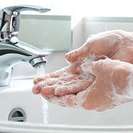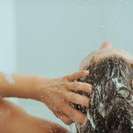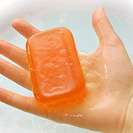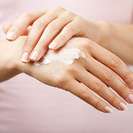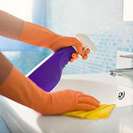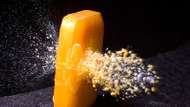Sodium laureth sulphate (SLES) is a common surfactant used in many personal care and consumer products, usually as a ‘gentler’ alternative to the skin irritating sodium lauryl sulphate (SLS). Although it can be said to be gentler, SLES can still produce skin and eye irritation, according to SLES MSDS Chemtrade International. SLES is an ‘ethoxylated’ product, meaning it has been processed with ethylene oxide. The consequence of this is that there is a chance the final product is contaminated with 1,4-dioxane, which is a known carcinogen.
Top 5 nasty chemicals you should know about
Cocamidopropyl betaine (CAPB) was first reported as an allergen in 1983, and there have been many reports of allergic contact dermatitis from shampoos, contact lens solutions, toothpaste detergents, makeup removers, bath gels, skin care products, cleansers, liquid soaps, antiseptics, and gynaecologic hygiene products. CAPB is a surfactant type molecule used as a detergent or foaming cleanser.
Triclosan is an antibacterial chemical. As well as being used in soaps, toothpaste and other body care products, triclosan is used in consumer goods like rubbish bags, toys, linen and even mattresses. In the US, the drug administration has questioned the effectiveness and safety of triclosan, saying it could pose risks like bacterial resistance or hormonal effects. Chemicals like triclosan that mimic the natural hormones produced by the body are known as endocrine disrupting chemicals, which can interfere with healthy hormonal development.
Phthalates are often used as plasticisers (substances added to plastics to increase their flexibility, transparency, durability, and longevity) as well as many common consumer and cosmetic products. Some of the concerns that have been identified about phthalates are eye irritation and mild skin irritation. Phthalates are known endocrine disruptors, which mean that they affect hormones within the body.
Synthetic perfumes and dyes are human-made. These perfumes are often used to enhance the perception of a scent or to mask the scent of the raw materials used. They’ve been identified as a potential irritant to the eyes, skin and lungs, and can cause allergic contact dermatitis. Some synthetic perfumes can harm the environment because they’re not removed during wastewater treatment, but have high aquatic toxicity. Common synthetic dyes are azo dyes, naphthalene dyes and FD and C dyes which are often made from coal tar. They’re used in food, personal care products and cleaners. They can irritate the eyes, skin and lungs and potentially release carcinogenic amines.
We live in a world where we can be exposed to nasty chemicals every day. Human-made chemicals are in our food, our drinking water, our oceans and rivers, the air we breathe, the products we use on our skin and hair, the electronics we buy, the containers we store things in, our kids’ toys and much more. Over 84,000 chemicals exist for commercial use and 1000 new ones are being developed every year around the world. Some of those chemicals may be useful, but some can have damaging long term health effects and others are in use that we simply don’t know enough about.
Legislation hasn’t kept pace with chemical development, and despite global efforts to tackle big issues like plastics and marine pollution; chemical and waste management throughout their lifecycle; pesticides; persistent organic pollutants; and endocrine disrupting chemicals, it’s still up to us to take care of ourselves and our families – and to urge companies to play their part.
At ecostore, we believe in making it easy to choose safer products to put on your skin or use around your home. We’ve designed our products to be safer for you and our world, without compromising on performance. If there’s any doubt about the safety of an ingredient, we’ll always seek a safer alternative as part of our journey of constant innovation.
_
If there's any doubt about the safety of an ingredient, we'll always seek a safer alternative as part of our journey of constant innovation.
_
We encourage you to look at what’s in the products you buy for your home and family. We also want to empower you to make safer choices about any products you buy, which is why we’ll always tell you what’s in our products.
Below we’ve outlined some of the ingredients commonly found in personal care and home cleaning products that you might want to avoid. You can also see an index of the ingredients we use and those we choose to leave out here.
© 2022 ecostore Company Limited. All rights reserved.
